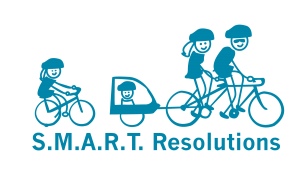January 1st is the annual Setting of the New Year’s Resolutions. All across the world, people are vowing to work out more, eat more fruits and vegetables, get more work done, take the Facebook app off their smartphone and be nicer to everyone they see.
Resolutions almost always get broken, why? They didn’t follow the S.M.A.R.T goal setting model.
Specific
Measureable
Attainable
Realistic
Time-Bound

The S.M.A.R.T framework for goal setting works because it frees you up from the nebulous “I will work out more this year” or “I will eat more vegetables” and puts the goal-setting in a specific, mapped framework:
Specific: I will eat one vegetable portion with lunch and dinner
Measurable: I will cut up ½ cup of veggies with lunch and dinner and I will record it using a fitness/eating app like My Fitness Pal
Attainable: I will cut up veggies on Sunday evenings to have them prepared for my week’s meals
Realistic: When eating out, I will choose the side vegetable item instead of French fries
Time-bound: I will tally my progress at the end of each week, month and at the end of the year
And the bonus: A reward!
Business goals have an intrinsic reward: sales, customers, growth. Personal rewards often come in packages that are less obvious. Will you lose weight eating more vegetables? Possibly. Your heart and body will certainly thank you, but that’s not measurable like the scale (or your belt) is.
I recommend for personal goal setting, that you set a reward for your activities that is related to the outcome of the goal. If your goal was to eat vegetables for two meals per day, your reward could be a new cookbook featuring vegetable dishes, or even a trip to a fancy local / sustainable restaurant that makes amazing food (including vegetables!) Don’t make your reward French fries; it defeats your efforts entirely. (Sorry!)
Probably the most-set goal of the new year is to exercise. We agree with this wholeheartedly; a sound body makes for a sound mind. It reduces absenteeism at work, and it rewards us by making us happier and well-adjusted. Those are traits in colleagues we WANT to work with!
Let’s break down that exercise goal into a S.M.A.R.T goal:
Our goal is to ride more miles on bikes this year, for fitness and enjoyment
Specific: I will ride 4 bike rides in excess of 50 miles per ride in 2016
Measurable: I will track my training rides and my goal rides on Strava (a cycling app)
Attainable: I will sign up for four supported one day bicycle tours, each offering the 50 mile option
Realistic: I ride once per weekend of 20-30 miles, every weekend the weather permits (on weekends that are not part of the bike tours). If weather does not permit, I will substitute an alternative activity (cross country skiing, riding on an indoor trainer, running) of similar time duration and intensity as a 20-25 mile bike ride (about 1.5 hours at a moderate pace with some hard intervals)
Time-bound: I will complete these four rides by September 30, 2016
Without the specificity of this type of goal setting, “riding more miles on bikes this year” would be a goal that might or might not be achieved, and further, it might not be achieved to the positive satisfaction of the rider. Specificity allows this rider to plan out specific things each week that will help her achieve goals that are, as of right now, something she has not done in a long time.
Coming next, S.M.A.R.T. Goals for your small business.






